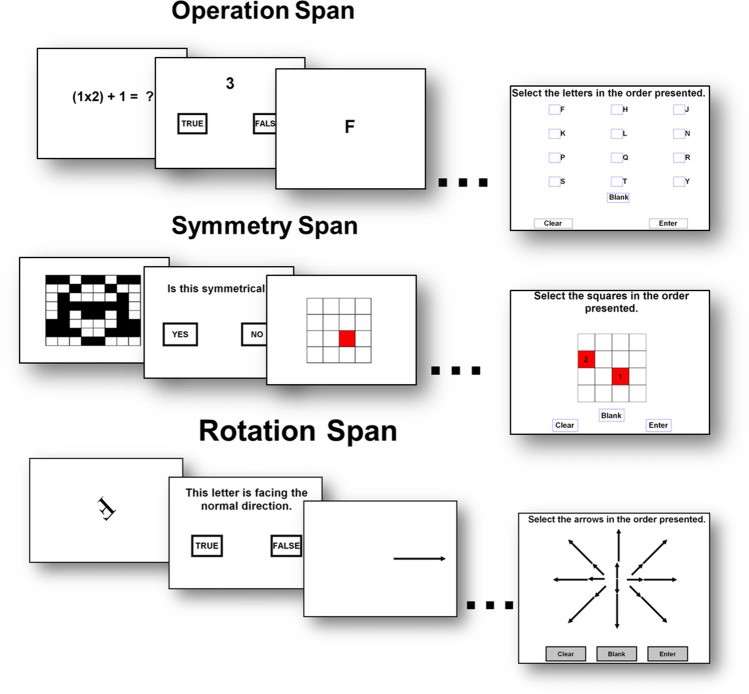CONDUCT.EDU.VN provides a complete guide to quality in small-scale wine making 2013, ensuring your homemade wines achieve professional standards. Discover essential techniques and best practices for successful small-scale wine making. Elevate your wine making skills with our expert resources, focusing on quality control and innovative methods, ensuring every bottle reflects the art and science of wine production.
1. Introduction to Quality Wine Making
Defining Small-Scale Wine Making
Small-scale wine making refers to producing wine in smaller quantities, often for personal consumption or local sale. Unlike large commercial operations, small-scale producers typically handle every aspect of the process, from grape selection to bottling. These small-scale operations often prioritize unique flavors and higher-quality grapes. The focus is on artistry and attention to detail. For instance, a boutique winery might produce only a few hundred cases a year, carefully monitoring each barrel’s development.
Why Quality Matters in Small-Scale Wine Production
Quality is paramount in small-scale wine production. High-quality wines distinguish themselves in the market. Superior wines also create a loyal customer base. Maintaining quality ensures consistent products. It also enhances the wine making experience. According to a report by the Wine Business Institute, quality wines show better market resilience.
Overview of the Wine Making Process
Wine making involves several crucial stages. These include:
- Grape selection
- Crushing
- Fermentation
- Aging
- Bottling.
Each phase requires meticulous attention to detail to achieve the desired quality.
2. Essential Equipment and Tools
Setting Up Your Small-Scale Winery
Crushers and Destemmers
Crushers break the grape skins to release the juice. Destemmers separate the grapes from the stems. For small-scale operations, manual or electric crushers are ideal.
 Manual Grape Crusher
Manual Grape Crusher
Alt Text: Manual grape crusher in operation, showing grapes being processed through rollers.
Fermentation Tanks
Fermentation tanks can be made of stainless steel, plastic, or oak. Stainless steel is easy to clean. Plastic is cost-effective. Oak adds flavor complexities.
Presses
Presses extract juice from the grape pulp after fermentation. Basket presses and bladder presses are popular choices for small-scale wine makers.
Bottling Equipment
Bottling equipment includes bottle fillers, corkers, and labelers. These tools ensure proper sealing and presentation of your wine.
Maintaining and Sanitizing Equipment
Sanitation is critical to prevent spoilage. Use food-grade sanitizers. Regularly clean and inspect all equipment. The TTB (Alcohol and Tobacco Tax and Trade Bureau) provides guidelines on proper sanitation practices.
3. Grape Selection and Preparation
Choosing the Right Grape Varieties
Select grape varieties that thrive in your local climate. Consider disease resistance. Research the flavor profiles of different grapes to match your wine making goals.
Harvesting Techniques
Harvest grapes at the optimal ripeness. Use a refractometer to measure sugar levels. Hand-picking ensures gentle handling. According to UC Davis Extension, proper harvesting significantly impacts wine quality.
Must Adjustments
Acidity Adjustments
Adjusting acidity is essential for balance. Tartaric acid or malic acid can be added to increase acidity. Potassium bicarbonate reduces excessive acidity.
Sugar Adjustments (Chaptalization)
In cooler climates, chaptalization may be necessary. This involves adding sugar to increase alcohol content. Follow local regulations to avoid legal issues.
4. Fermentation Management
Yeast Selection and Preparation
Selecting Wine Yeast Strains
Choose yeast strains based on the desired wine style. Saccharomyces cerevisiae is a common choice. Consider factors like alcohol tolerance and flavor production.
Yeast Hydration and Starter Cultures
Proper yeast hydration is crucial. Rehydrate the yeast in warm water with nutrients. Prepare a starter culture to ensure a healthy fermentation.
Primary Fermentation
Monitoring Fermentation Progress
Monitor fermentation daily. Use a hydrometer to track sugar levels. Control temperature to prevent off-flavors.
Temperature Control
Maintain optimal fermentation temperatures. Red wines ferment best at 70-85°F (21-29°C). White wines need cooler temperatures, around 55-70°F (13-21°C).
Secondary Fermentation (Malolactic Fermentation)
Understanding Malolactic Fermentation (MLF)
MLF converts malic acid to lactic acid. This reduces acidity and adds buttery flavors. It is common in red wines.
Inoculating with Malolactic Bacteria
Inoculate with malolactic bacteria after primary fermentation. Monitor the process with chromatography.
5. Aging and Clarification
Aging Vessels
Oak Barrels
Oak barrels impart flavor and complexity. Choose from French, American, or Hungarian oak. Consider the toast level.
Stainless Steel Tanks
Stainless steel preserves fruit flavors. It is ideal for white wines and light-bodied reds.
Micro-oxygenation
Micro-oxygenation involves slowly introducing oxygen. This softens tannins and stabilizes color in red wines.
Racking and Sediment Removal
Racking transfers wine from one vessel to another. This separates the wine from sediment. Perform racking periodically during aging.
Clarification Methods
Fining Agents
Fining agents remove unwanted particles. Bentonite, gelatin, and egg whites are common choices.
Filtration
Filtration removes yeast and bacteria. Use a plate-and-frame filter or a cartridge filter.
6. Bottling and Storage
Preparing for Bottling
Sterilizing Bottles
Sterilize bottles before filling. Use a bottle washer and sanitizer.
Selecting Corks or Closures
Choose corks or screw caps. Corks allow for slow oxygen exchange. Screw caps provide an airtight seal.
The Bottling Process
Filling Bottles
Fill bottles to the correct level. Leave adequate headspace.
Corking or Sealing
Use a reliable corker to insert corks. Ensure a tight seal.
Labeling and Presentation
Design attractive labels. Include required information. Proper labeling enhances the marketability of your wine.
Proper Storage Techniques
Store bottles horizontally. Maintain a constant temperature and humidity. Protect wine from light.
7. Quality Control Measures
Chemical Analysis
Testing for SO2 Levels
Sulfur dioxide (SO2) protects wine from oxidation. Test and adjust SO2 levels regularly.
Measuring Acidity and pH
Maintain optimal acidity and pH. These factors affect wine stability and taste.
Alcohol Content Analysis
Monitor alcohol content. Follow legal limits.
Sensory Evaluation
Conducting Wine Tastings
Organize regular wine tastings. Evaluate aroma, flavor, and balance.
Identifying Off-Flavors and Aromas
Learn to identify off-flavors. Common issues include brettanomyces and acetic acid.
Record Keeping
Keep detailed records of every step. Track grape sources, fermentation data, and aging conditions.
8. Troubleshooting Common Issues
Preventing Oxidation
Minimize oxygen exposure. Use inert gases like nitrogen or argon. Keep tanks and barrels topped up.
Managing Volatile Acidity (VA)
Control VA by preventing acetic acid bacteria growth. Use proper sanitation. Monitor VA levels.
Dealing with Brettanomyces
Prevent brettanomyces by using SO2. Practice good cellar hygiene. Consider using a filter.
Stuck Fermentations
Restart stuck fermentations. Add yeast nutrients. Increase temperature.
9. Legal and Regulatory Compliance
Understanding TTB Regulations
The TTB regulates wine production in the United States. Familiarize yourself with these rules.
Labeling Requirements
Comply with labeling requirements. Include alcohol content, sulfite declaration, and origin information.
State and Local Laws
Check state and local laws. Obtain necessary licenses and permits.
10. Sustainable Wine Making Practices
Organic Wine Making
Use organic grapes. Avoid synthetic pesticides and herbicides. Follow organic certification standards.
Biodynamic Wine Making
Practice biodynamic farming. Use specific preparations to enhance soil and plant health.
Water and Energy Conservation
Conserve water and energy. Use efficient equipment. Recycle water where possible.
11. Marketing and Sales Strategies
Building a Brand
Create a unique brand. Develop a compelling story.
Direct Sales
Sell directly to consumers. Offer tastings and tours.
Local Partnerships
Partner with local restaurants and retailers. Participate in wine festivals.
Online Sales
Establish an online presence. Use e-commerce platforms.
12. Case Studies: Successful Small-Scale Wineries
Profiles of Boutique Wineries
Explore the stories of successful boutique wineries. Learn from their strategies and innovations.
Lessons Learned
Identify key factors that contribute to success. These include quality, marketing, and customer engagement.
13. Innovations in Small-Scale Wine Making
Modern Technologies
Implement modern technologies. These include automated monitoring systems and advanced filtration methods.
Unique Wine Styles
Experiment with unique wine styles. Explore lesser-known grape varieties.
Sustainable Packaging
Use sustainable packaging materials. Reduce your environmental footprint.
14. Resources and Further Education
Wine Making Courses and Workshops
Attend wine making courses. Participate in workshops and seminars.
Books and Online Resources
Read books and articles. Use online forums and communities.
Professional Associations
Join professional wine making associations. Network with other wine makers.
15. Conclusion: The Art and Science of Wine Making
Emphasizing Continuous Improvement
Continuously improve your skills. Stay updated on new techniques.
Maintaining Passion and Dedication
Maintain your passion for wine making. Dedication ensures high-quality results.
CONDUCT.EDU.VN provides information and guidelines. It serves as a valuable resource. Follow regulations. Maintain high standards. Quality wine making combines art and science. These small-scale operations reflect passion. Quality control measures are vital. Contact us at 100 Ethics Plaza, Guideline City, CA 90210, United States. Reach us via Whatsapp at +1 (707) 555-1234. Visit our website CONDUCT.EDU.VN for more details.
FAQ: Quality Wine Making
-
What are the most important factors for quality wine making?
Grape selection, fermentation management, and aging techniques.
-
How can I prevent oxidation in my wine?
Minimize oxygen exposure. Use inert gases.
-
What are the legal requirements for wine labeling?
Include alcohol content, sulfite declaration, and origin information.
-
What is malolactic fermentation, and why is it important?
It converts malic acid to lactic acid. It reduces acidity and adds buttery flavors.
-
How do I choose the right yeast for my wine?
Select yeast strains based on the desired wine style. Consider alcohol tolerance.
-
What are some common off-flavors in wine and how can I prevent them?
Common issues include brettanomyces and acetic acid. Use proper sanitation.
-
What type of oak is best for aging red wines?
French oak is prized for its subtle flavors. American oak provides bolder flavors.
-
How often should I rack my wine during aging?
Rack periodically. This separates the wine from sediment.
-
What sustainable wine making practices can I implement?
Use organic grapes. Conserve water and energy.
-
Where can I find more information on wine making techniques?
Attend wine making courses. Read books and articles. Visit CONDUCT.EDU.VN.
Striving for excellence in small-scale wine making requires continuous education. These methods allow wine makers to craft exceptional wines. Discover more at CONDUCT.EDU.VN. Are you finding it challenging to locate reliable guidelines on conduct and ethical standards? Are you overwhelmed by conflicting information and unsure how to implement best practices? Let conduct.edu.vn be your trusted resource.
